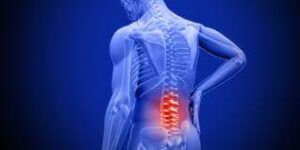Vertebrogenic Pain

As the discs of the spine wear and tear with age, they can put excessive stress on the bones of the spine (vertebrae), leading to damage to the vertebrae. Vertebrogenic pain is a specific type of chronic low back pain caused by damage to these vertebrae. Thes edges of the vertebrae are called endplates, and they play a crucial role in distributing weight and forces throughout the spine. When damaged, they can irritate nearby nerves and lead to pain.
Symptoms:
Vertebrogenic pain causes deep, aching, or burning pain in the lower back, often described as radiating to the buttocks. This pain worsens with certain activities, such as sitting, bending forward, lifting, or twisting. The pain improves with rest or lying down
Diagnosis:
Physical examination: Your doctor will ask about your medical history and symptoms and perform a physical examination to assess your range of motion and tenderness.
Imaging tests: X-rays, MRIs, and CT scans can help visualize the spine and identify any damage to the vertebral endplates and discs. MRI is the best way of determining whether you have the hallmark findings of vertebrogenic pain, called Modic changes.
Treatment:
Conservative treatments: These include physical therapy, pain medication, injections, and lifestyle modifications like maintaining good posture and avoiding activities that aggravate the pain.
Basivertebral nerve ablation (BVNA): This minimally invasive procedure targets the basivertebral nerve, which supplies sensation to the vertebral body, to interrupt pain signals. This is a minimally invasive procedure, which has proven very successful for treating this condition.
